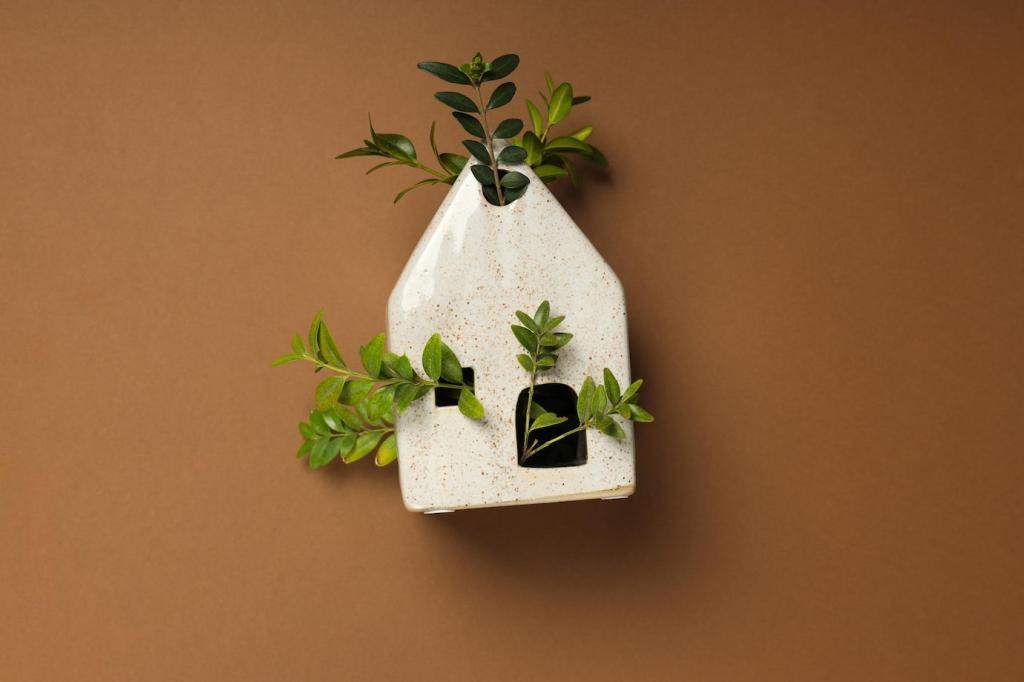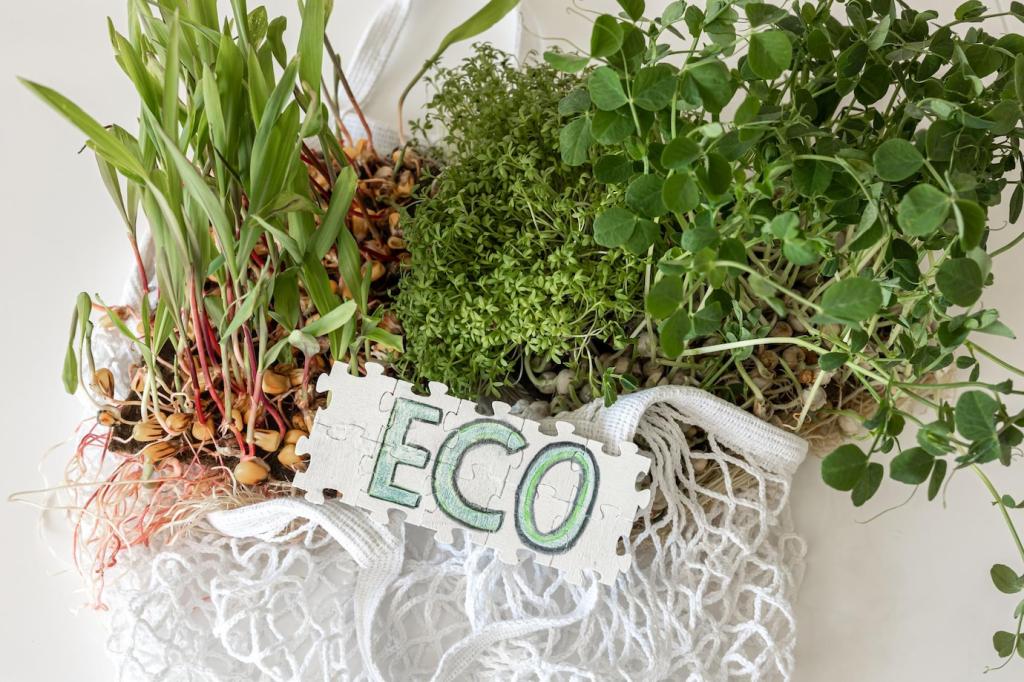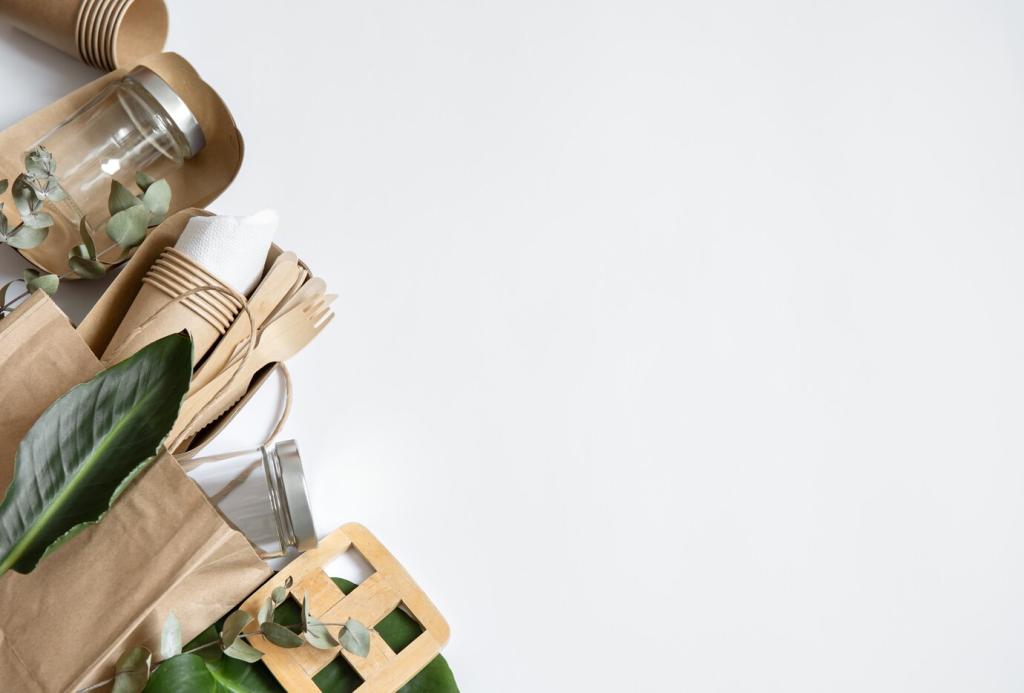
Living Design: Innovative Biodegradable Materials for Furniture
Chosen theme: Innovative Biodegradable Materials for Furniture. Step into a future where chairs sprout from mushrooms, tables breathe with plant fibers, and every offcut returns to the soil as nourishment. Join the conversation, share your experiments, and subscribe for hands-on guides and candid lessons learned.
Why Biodegradable Furniture Matters Now
Imagine your broken side table becoming mulch that feeds a backyard tomato, not a landfill mountain. Innovative biodegradable materials for furniture can complete a genuine loop, returning carbon to soil, supporting microbes, and shrinking disposal costs. Tell us where you would plant your first composted chair.
Look for credible certifications such as EN 13432 or ASTM D6400 that define disintegration rates, heavy metal limits, and compost safety. Many biodegradable materials for furniture need industrial composting temperatures, while others degrade at home. Always request data sheets, and ask manufacturers tough, respectful questions.
Last spring, we grew a small mycelium chair from agricultural waste in a simple plywood mold, then baked it to stabilize. After a year of gentle use, we composted it. Worms loved it, and the next season our basil exploded. Subscribe if you want the full build notes.

Material Spotlight: Mycelium, Algae, and Plant Fibers
Mycelium binds agricultural fibers into lightweight panels and forms. You inoculate a clean substrate, let it grow in a mold, then heat it to stop growth. The result has surprising compressive strength, pleasant acoustics, and a warm, organic texture. Share your best growth tips or contamination cautionary tales.


Material Spotlight: Mycelium, Algae, and Plant Fibers
Algae-derived polymers and alginate gels can become flexible foams for cushions or shells for lamps, replacing petrochemical polyurethane in furniture. Some dissolve in saline or compost readily under warm, moist conditions. Their sea-green hues and matte surfaces feel modern yet natural. Tell us which algae sources you can access locally.
Modular Joinery, Not Permanent Glues
Consider tapered mortise-and-tenon joints, wooden pegs, or wedge-and-slot assemblies that create strong, serviceable connections without toxic adhesives. Replacing a damaged leg or rail should take minutes, not hours. Share photos of your smartest friction-fit detail so others can learn and adapt it responsibly.
Biobased Fasteners and Hybrid Strategies
Use PLA pins, wooden screws, and cellulose tapes where loads allow; combine with minimal metal elements when safety demands. Mark components clearly so compostable parts can be separated easily. What fasteners have survived your disassembly tests, and how do you document part pathways for end-of-life clarity?
Repair Culture as Design Feature
Ship spares with the product, publish repair guides, and design modules that slide out without tools. Celebrate patches, visible mends, and re-oiling rituals that keep biodegradable materials for furniture charming. Host a local repair evening and tell us what snacks keep morale high during tricky fixes.

Moisture, Strength, and Real-World Use
Seal vulnerable edges with natural oils or waxes, elevate feet off wet floors, and choose fiber orientations that carry loads gracefully. Structural bamboo laminates and hemp-PLA shells can handle daily wear if designed thoughtfully. Post your spill tests and dent measurements so our community benchmarks stay honest.
Fire and Heat Considerations
Explore bio-friendly fire retardancy approaches such as phytic-acid treatments, mineral fillers, or intumescent coatings derived from biobased chemistries. Always test small samples under controlled conditions before full builds. Share results, including failures, so we accelerate safer biodegradable materials for furniture together.
Indoor Air Quality and Comfort
Low-VOC oils, shellac, and plant waxes keep rooms fresh while protecting surfaces. Avoid formaldehyde-based binders when selecting panels. Some mycelium parts have an earthy scent that fades with curing. Tell us how your family responded and which finishes balanced comfort, durability, and compostability best.
Finishes and Adhesives That Return to Earth
Linseed and tung oils penetrate fibers, while carnauba or beeswax adds a gentle sheen. Shellac flakes dissolved in alcohol create a fast-drying, repairable barrier. Maintain with light re-oiling, not heavy sanding. What application schedules have given you the best hand feel without compromising compostability later?
Sourcing and Scaling Responsibly

Local Feedstocks and Short Chains
Partner with farms for straw, seed hulls, and hemp; with sawmills for fines; and with mushroom growers for clean mycelial spawn. Shorter transport reduces emissions and cost. Tell us which local suppliers surprised you with hidden byproducts perfect for experimental furniture cores and panels.

Costs, Risks, and Learning Curves
Early-stage materials often cost more, but learning curves are steep. Prototype small, modular pieces to minimize waste and measure labor honestly. Invite preorders or community backing only after testing. What budgeting templates or bill-of-materials trackers helped you manage uncertainty without sacrificing creative momentum?

Ethics and Transparency
Publish life cycle assumptions, list additives, and state compost conditions clearly on tags. Responsibility builds trust and invites collaboration. If you have an impact report or open-source material recipe, share it. Our readers appreciate candor about limits in biodegradable materials for furniture.
Getting Started: Prototypes and Participation
Build a Compost-Ready Stool This Weekend
Use a hemp-PLA panel for the seat, mycelium for a lightweight core, and pegged wooden legs. Finish with tung oil and a touch of wax. Download our step-by-step guide, then share photos, missteps, and triumphs so we can refine the instructions together.
Test, Measure, Iterate
Run simple home tests: compress legs using a bathroom scale, drip-test finishes, and log weight changes across humidity swings. Upload results to our shared spreadsheet and comment on patterns. Iteration makes innovative biodegradable materials for furniture feel dependable, not experimental.
Join the Conversation
Subscribe for new material recipes, vote on our next prototype, and join monthly live sessions with researchers and designers. Share your failures as openly as your wins, because both move the field forward. Invite a friend who loves sawdust and soil science equally.

